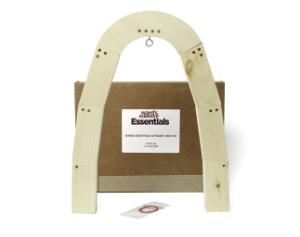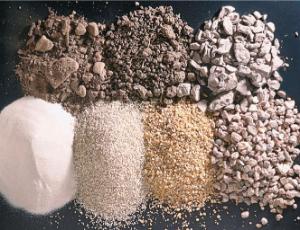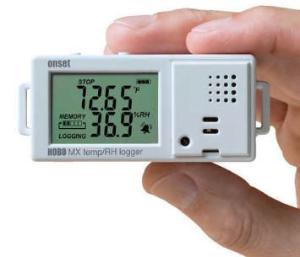Indigenous Ecological Practices: Harnessing Traditional Wisdom
Middle to High School
Our planet is a complex web of life where every species, ecosystem, and element are interconnected. For generations, indigenous communities worldwide have held a profound understanding of this delicate balance and have successfully sustained their ecosystems using traditional knowledge passed down through centuries. The students in your class will benefit from learning about the invaluable contribution of indigenous wisdom in preserving the environment. You can help students explore the indigenous knowledge (aka Traditional Ecological Knowledge) that has sustained ecosystems for generations and discuss the importance of respecting and learning from these traditions. Everything old is new again, hurray!
What does indigenous mean?
Test your students’ knowledge by asking if they know what the word “indigenous’ means. Don’t be surprised if you get various responses (and a few blank stares). Even the United Nations has not adopted an official definition. Instead, they offer this set of criteria1:
- Self-identification as indigenous peoples at the individual level and acceptance by the community as their member
- Historical continuity with pre-colonial and/or pre-settler societies
- Strong link to territories and surrounding natural resources
- Distinct social, economic, or political systems
- Distinct language, culture, and beliefs
- Form non-dominant groups of society
- Resolve to maintain and reproduce their ancestral environments and systems as distinctive peoples and communities
With that understanding, it’s easy to see why the indigenous ways of understanding and interacting with the natural world emphasize the relationships and connections among species.
You can harvest these examples of how indigenous knowledge addresses each of the following:
- Biodiversity and Ecosystem Management
- Sustainable Agriculture
- Medicinal Plant Knowledge
- Climate Adaptation
1. Biodiversity and Ecosystem Management:
The Maasai people, indigenous to East Africa, deeply understand their local ecosystems, particularly in the savannah grasslands. They rely on their traditional knowledge to manage and conserve biodiversity in the region. Maasai herders have developed sustainable practices for livestock grazing and land management that help maintain the ecosystem's balance. Their knowledge includes:
Controlled Grazing: The Maasai use a rotational grazing system that allows pastures to recover after use. They move their livestock from one area to another, preventing overgrazing in a specific location and promoting the health of the grasslands.
Water Management: Maasai know about seasonal water sources and the importance of not overusing them during dry periods. They protect these sources and avoid depleting them, ensuring they remain accessible for humans and wildlife.
Fire Management: Controlled burns are used to rejuvenate grasslands and prevent the encroachment of woody species. Maasai communities conduct these burns at specific times to maintain the open savannah environment.
Wildlife Conservation: The Maasai traditionally live close to wildlife like elephants and lions. They have developed coexistence strategies to reduce conflicts and protect these species, like using traditional methods to scare off predators rather than resorting to lethal measures. These methods include guard animals (i.e., dogs, donkeys, and llamas), fencing, lights and noise, chili pepper barriers, scarecrows, firecrackers, whistles, strategically placed beehives, motion-activated sprinklers, and animal relocation.
The indigenous Mayan communities in Central America practice a traditional farming method called "milpa," a sustainable agricultural system that demonstrates indigenous knowledge in action. This system involves cultivating maize (corn), beans, and squash on the same plot of land. Each plant has a role within the ecosystem:
- Corn provides a trellis for the beans to climb, while beans fix nitrogen in the soil, enhancing its fertility.
- Squash acts as ground cover, suppressing weeds and reducing soil moisture evaporation.
Combining these crops creates a balanced and sustainable agricultural ecosystem, improving soil quality and promoting crop diversity. Maybe those crabs in a barrel could take a few lessons and finally get free!
Traditional Chinese Medicine (TCM) is an ancient medicine system developed and refined by indigenous Chinese communities over thousands of years. TCM relies heavily on medicinal plants and herbs to treat various ailments and maintain health. Many indigenous Chinese communities have passed down their knowledge of medicinal plants from generation to generation. For example:
Ginseng (Panax ginseng): Indigenous knowledge from Chinese communities highlights using ginseng roots as a traditional remedy to boost energy, improve mental clarity, and enhance overall well-being. Modern scientific studies have confirmed some of its medicinal properties, including its adaptogenic and antioxidant effects.2
Artemisia Annua (Sweet Wormwood): Indigenous knowledge in China recognized the antimalarial properties of Artemisia Annua. This plant's active compound, artemisinin, is now crucial in treating malaria worldwide.3
The Inuit people of the Arctic have developed unique knowledge and strategies to adapt to the environmental challenges brought by climate change. This knowledge includes:
Ice Navigation: Inuit hunters and travelers have an intricate understanding of sea ice and its behavior, enabling them to navigate safely and efficiently. This knowledge is critical for hunting and transportation.
Snow Houses (Igloos): The design and construction of igloos use indigenous knowledge to create well-insulated and warm shelters, allowing Inuit communities to endure extreme cold temperatures.
Seasonal Timing: Inuit communities rely on generations of knowledge about seasonal variations, weather patterns, and animal migrations to plan activities like hunting and fishing. The University of Victoria has worked with Inuvialuit communities for years to understand how weather affects residents’ subsistence activities. Inuvialuit (Western Canadian Inuit) residents regularly observe the waves, winds, snow, and ice conditions that interfere with their hunting, fishing, camping, and other activities.4
These examples demonstrate how indigenous knowledge is crucial in addressing various environmental and societal challenges, including biodiversity conservation, sustainable agriculture, medicinal plant utilization, and climate adaptation. Indigenous knowledge is often rooted in a profound understanding of local ecosystems and can offer valuable insights and solutions for contemporary issues.
1. United Nations Permanent Forum on Indigenous Issues 2. NIH National Center for Biotechnology Information: Biological Activities of Ginseng and Its Application to Human Health. 3. NIH National Center for Biotechnology Information: Dried whole-plant Artemisia annua slows evolution of malaria drug resistance and overcomes resistance to artemisinin 4. Historical Climatology: Weather, Climate Change, and Inuit Communities in the Western Canadian Arctic.
Recommended Products
[StartProductBlock]

Ward's® Essentials Catenary Arch Kit
Students explore the catenary arch and its structural integrity, observing its usefulness in building structures like igloos.
[EndProductBlock]
[StartProductBlock]

Soil, Sands, and Gravel Set
Useful for weathering and erosion, soil formation, porosity, and permeability, or other general earth science labs.
[EndProductBlock]
[StartProductBlock]

HOBO® Bluetooth Low Energy Temperature/Relative Humidity Data Logger
Measures and transmits temperature and relative humidity data wirelessly to mobile devices via Bluetooth Low Energy (BLE) technology.
[EndProductBlock]
